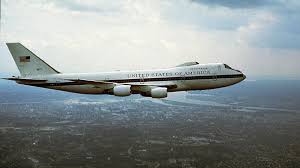Since the invention and use of nuclear weapons in World War II, the threat of nuclear war has kept the world on edge. This fear was particularly strong during the Cold War when tensions between the United States and the Soviet Union were high. In response, the U.S. military created several contingency plans, including the “doomsday plane,” a flying command post designed to survive nuclear radiation.
Officially called the National Airborne Operations Center (NAOC), these doomsday planes, also known as Nightwatch planes, are modified Boeing 747-200s equipped with advanced communication systems. Their purpose is to allow the military’s top officials to maintain control and command after a nuclear crisis.
Why Does The U.S. Have Doomsday Planes?
While the main role of the doomsday planes is to manage nuclear crises, their capabilities go beyond that. Initially, they were built to direct military operations during the Cold War, equipped with communication tools that national leaders needed to stay in touch. Over time, these planes evolved into fully functional mobile command centers for various war-related crises. These large jets offer 5,000 square feet of mobile office space, complete with secure conference rooms, media briefing rooms, and sleeping quarters. They can stay airborne for days, ensuring constant communication for national security experts.
The E-4Bs have windows covered with a mesh to protect against electromagnetic shockwaves from nuclear blasts. The cockpit has specialized masks to shield the pilots’ eyes from explosions. The planes also receive regular maintenance to ensure they are always ready to operate.
Each jet can hold a crew of 65 people and offers various communication options, including phone, radio, television, text messaging, and video broadcasting. This ensures that any VIPs onboard can reach anyone they need to contact.
The Evolution Of The Doomsday Planes
The concept of doomsday planes started in 1973 with the E-4A model. The first official E-4B model, which aligns with the current design, was delivered by Boeing in December 1979. Over the years, these planes have been continuously modernized, costing billions of dollars.
Despite the upgrades, the E-4Bs were originally designed in the 1970s and have outlived their expected lifespan by more than 20 years. While the military sees the importance of having an airborne command center, the future of the NAOC in its current form is uncertain.
In 2021, the Air Force started developing the Survivable Airborne Operations Center (SAOC) as a potential replacement for the doomsday planes. This program is still in early stages, with increased funding indicating a commitment to its development. However, there are concerns about the timeline and whether the SAOC will be ready before the NAOC reaches the end of its lifecycle.
For now, the current doomsday plane remains active and ready to serve its purpose.
